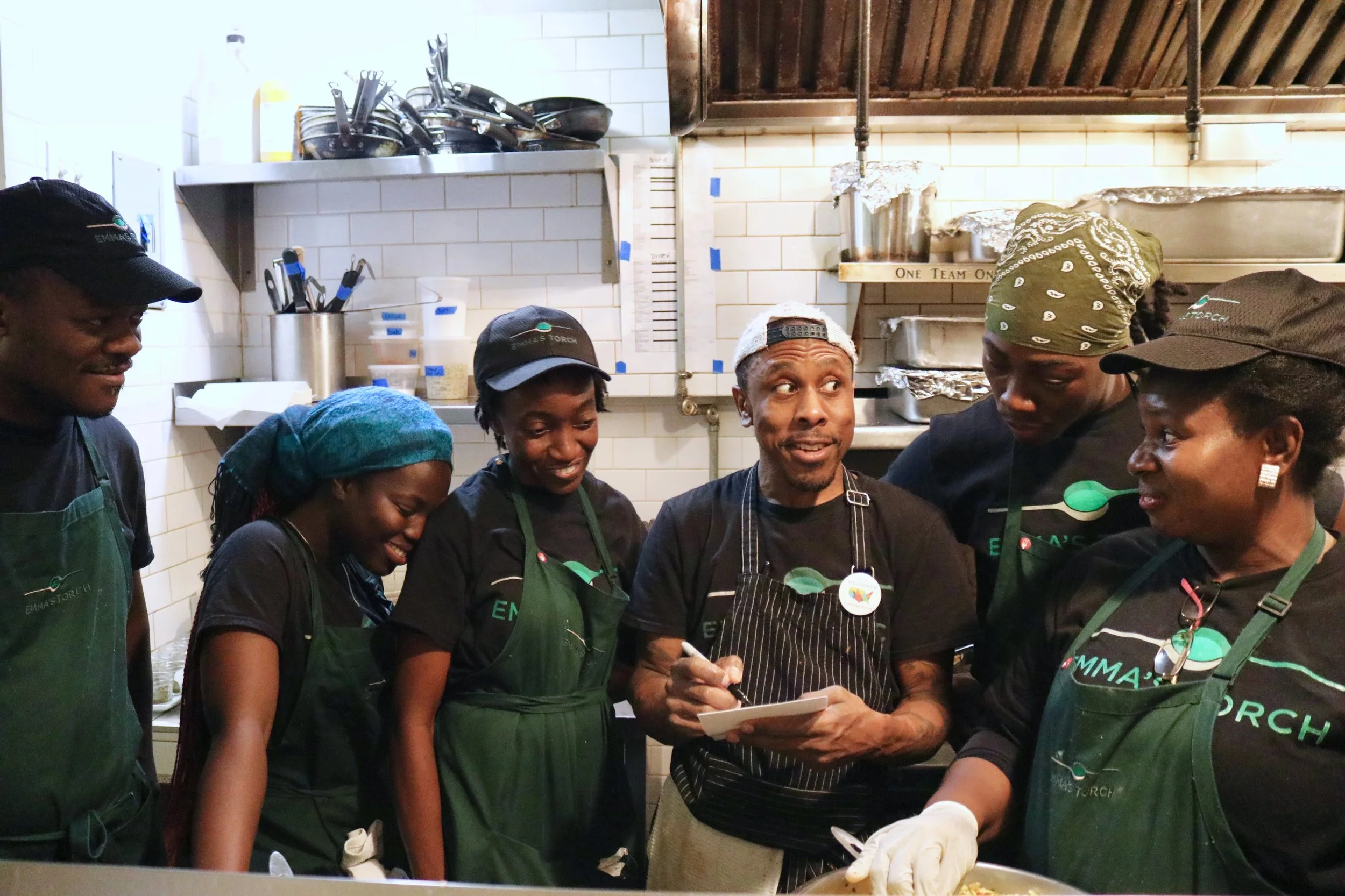It’s Not Just What You Learn, It’s How You Learn It
By Kira O’Brien, Chief Impact Officer
The curriculum we’ve developed at Emma’s Torch is built around a core theme: it’s not just what you learn, it’s how you learn it.
You might be able to perfectly dice a carrot, but can you do it when ten other things are happening on the line and service is about to start?
You might be able to poach an egg, but can you do it during a packed brunch when the dining room is full, a child is crying over spilled juice, and a bachelorette party is squealing over mimosas?
You might be able to tell me all about coping skills, but can you use them when the heat is literally on in the kitchen?
It might seem obvious: if you can do it in the classroom, of course you can do it during service… right?
Wrong. This misconception is why people lose jobs when they move abruptly from a safe classroom into a chaotic kitchen. For vulnerable adults seeking upward mobility, that misalignment can mean a cycle of getting and losing jobs—and it’s even harder to find work after being terminated.
In restaurants especially, context is critical. Students need to learn skills in the classroom and apply them in the kitchen before entering the broader workforce. That difference—between learning in theory and learning in practice—is why we center experiential education.
What Is Experiential Education?
Experiential education isn’t just “learning by experience.” It’s a researched philosophy and methodology with a proven impact on learners.
The core tenets include:
Active participation: Students are active contributors, not passive recipients.
Reflection: Structured space to process and integrate learning.
Real-world context: Lessons extend beyond the classroom, into environments with real pressures and stressors.
One of the leading theorists of this model, David Kolb, developed the Experiential Learning Cycle—a framework Emma’s Torch uses in our instruction.
The Experiential Learning Cycle
The cycle has four stages, each building on the next:
Concrete Experience (CE): doing the action in a live setting.
Reflective Observation (RO): reviewing and reflecting on the experience.
Abstract Conceptualization (AC): forming new insights from the reflection.
Active Experimentation (AE): applying those insights in the next attempt.
The critical piece is that each step must be clearly marked so the brain recognizes the shift. Here’s how it looks in our kitchen:
Concrete Experience: A student poaches an egg for avocado toast and it comes out hard-boiled.
Reflective Observation: The sous chef pauses, prompting the student to notice what went wrong and why serving it would be a problem.
Abstract Conceptualization: The student realizes that refiring the dish would cause more stress than slowing down to do it right, and that their timing was too long.
Active Experimentation: The student tries again, produces a perfect poached egg, and sends it out to a happy guest. The sous chef celebrates the learning moment.
It Works
This approach works. 88% of our students secure culinary jobs, and six months later—despite the industry’s high turnover rate—82% are still employed.
Why? Because they’ve practiced. They’ve bridged the gap between theory and context. They’ve gotten the reps in, built mastery, and gained the confidence to make positive transitions into the workforce.
…But We Need Your Help
We can’t do this without you. Our students need real-life practice, and that means volume in our cafés. They need the kid who spills the juice and the bachelorette party that orders another round of mimosas.
Every time you visit our cafés, order catering, or purchase our packaged goods, you are giving students the chance to learn-by-doing while enjoying a delicious meal yourself.
We can’t do this alone—and the good news is: helping us is delicious.



